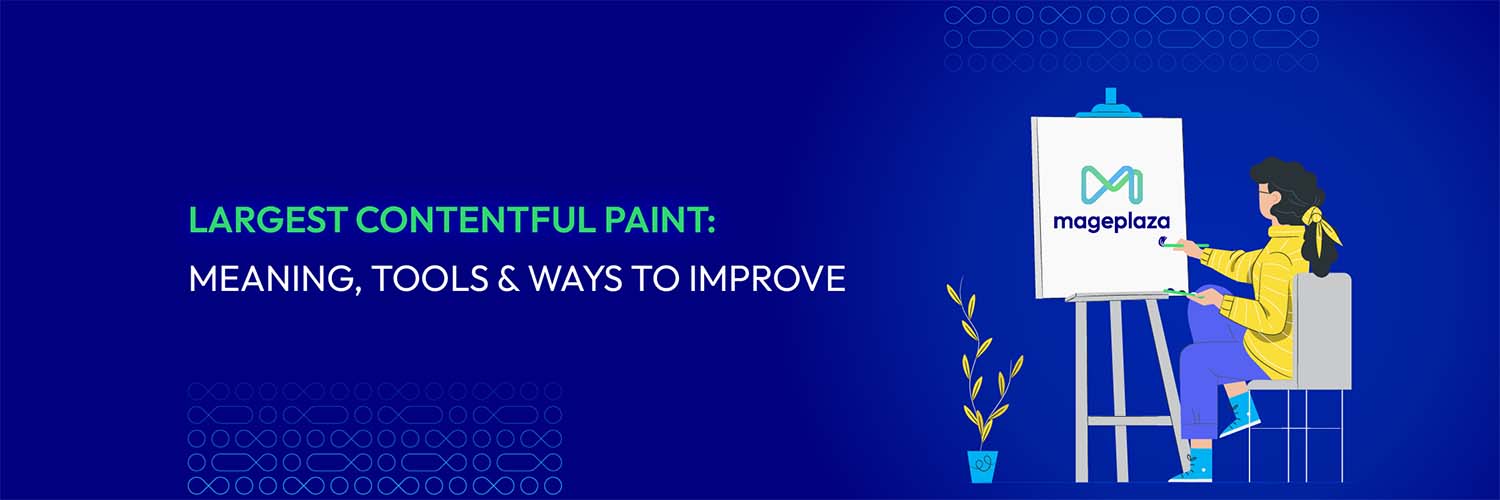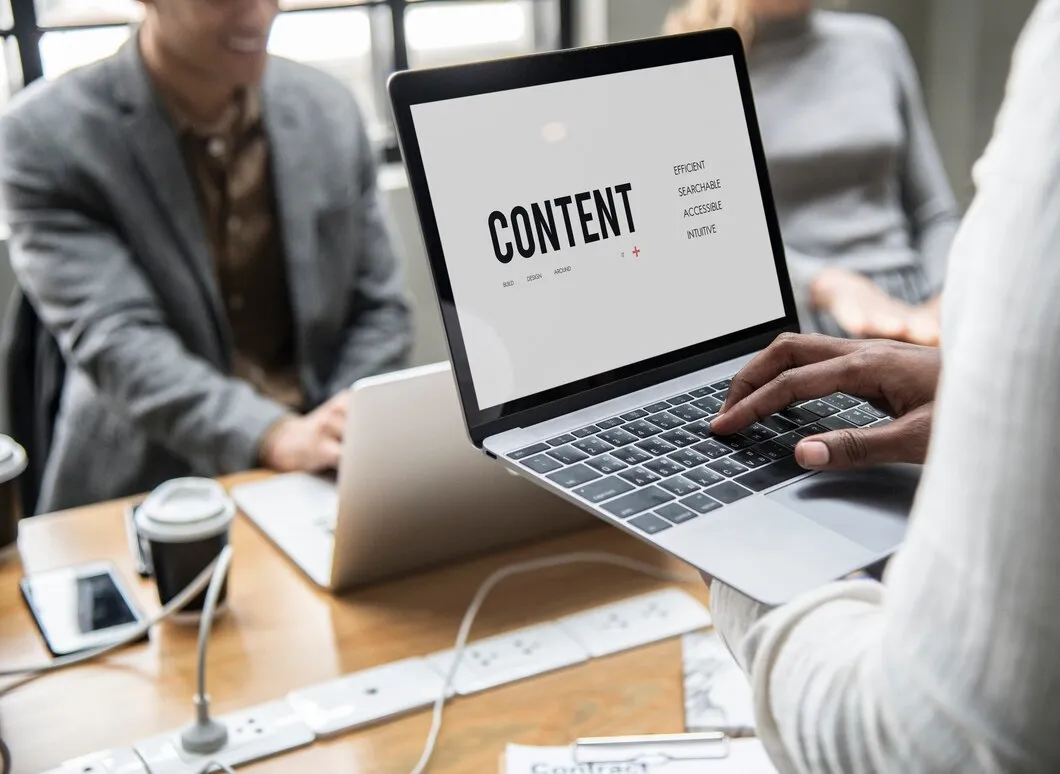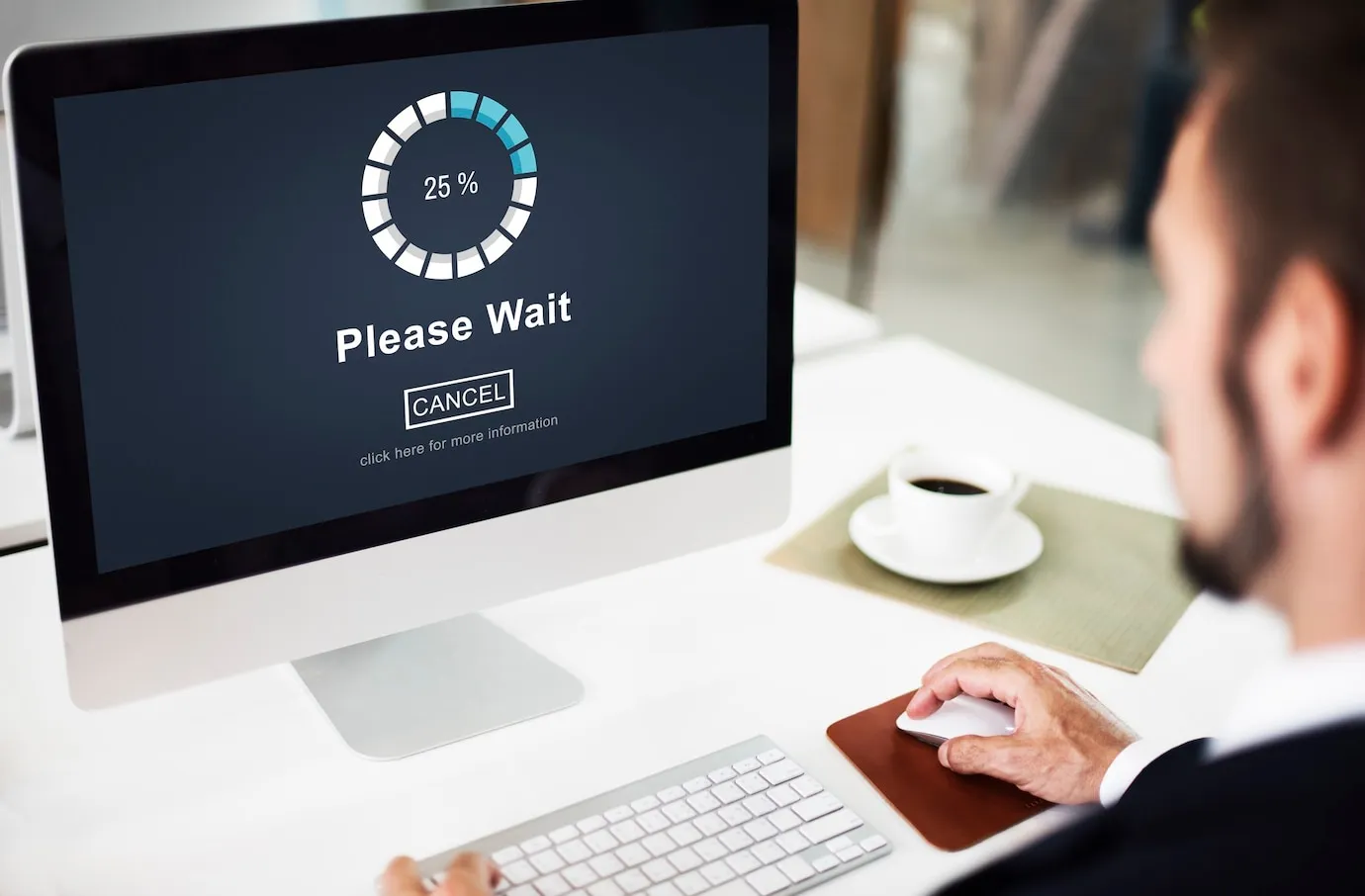Largest Contentful Paint: What It Is and How to Improve
Vinh Jacker | 07-20-2023

When utilizing your website as a platform for sales and customer communication, , it’s crucial to understand and implement techniques that enhance user experiences. One significant aspect of website performance that directly impacts user satisfaction is the Largest Contentful Paint (LCP).
The Largest Contentful Paint measures the time it takes for the largest visible element on a webpage to load and become fully rendered for users. In this article, we will delve into the importance of the largest contentful paint and how to improve it. Start now!
What is the Largest Contentful Paint? Its Importance
Largest Contentful Paint (LCP) is one of the three Core Web Vitals metrics, which measures how quickly the main content of a web page is loaded.. It focuses on the main content users see when they load a page, such as images, videos, or blocks of text. There are several noteworthy reasons why LCP is of utmost importance, such as:
- User experience:LCP provides a crucial indicator of how quickly users perceive a webpage’s loading speed. It plays a significant part in determining the overall user experience, as it directly impacts how fast users can interact with and consume the content on a website.
- SEO Ranking: LCP is considered an important metric for search engine optimization (SEO). Google and other search engines consider Core Web Vitals metrics, including LCP, when determining website rankings. Improving LCP and other Core Web Vitals can help improve a website’s ranking in search results .
- Bounce rate and conversions: According to Web.dev have shown that improving LCP can have a significant impact on bounce rates and conversions. For example, a 1-second improvement in LCP can result in a 14 percentage point decrease in bounce rate and a 13% increase in conversions .
- Page speed insights score: As stated by SEOSLY , LCP accounts for 25% of the overall PageSpeed Insights score. So, by improving LCP performance, you can improve your page speed grade and overall performance score.

Which is an ideal score for the Largest Contentful Paint?
Less than 2.5 seconds is the best time for the LCP test. It’s crucial to remember that users, devices, and network setups can affect how quickly a page loads. In order to provide the best user experience, achieving a consistently quick LCP in various contexts is essential.
To further understand LCP scoring, it’s helpful to consider the following ranges:
- Good: LCP under 2.5 seconds
A Good LCP score indicates that the largest visible element on the webpage loads quickly, providing users with a smooth and responsive experience.
- Needs improvement: LCP between 2.5 and 4 seconds
An LCP score falling within this range suggests that there is room for improvement in terms of loading speed. While the page may still be usable, users may experience a slight delay in perceiving the main content.
- Poor: LCP over 4 seconds
An LCP score over 4 seconds indicates a slow-loading webpage, which can lead to a significantly negative user experience. Users may encounter delays in accessing the main content, resulting in frustration and increased bounce rates.
Remember that these are only broad principles and that it’s crucial to consider your website’s particular context and objectives when assessing LCP ratings. To give your consumers a quick and delightful browsing experience, strive to get the greatest LCP performance you can within the limitations you have.
What Factors Can Result in a Poor LCP Score?
A poor Largest Contentful Paint (LCP) score (LCP over 4 seconds) can be caused by several factors. Here are some common factors that can result in a poor LCP score:
- Slow server response times: When a website server is slow to respond to a browser request, the largest content elements can take longer to render.
- Render-blocking JavaScript and CSS: Certain page elements, such as scripts, stylesheets, cookie banners, and page-building blocks on WordPress sites, can block the process of displaying an HTML page. This can cause a delay in loading website content.
- Slow resource load times: High-definition images take more time to load compared to text. Placing images above the fold (the top portion of a webpage that’s visible without scrolling) can have a negative effect on LCP.
- Client-side rendering: Slow client-side rendering can also contribute to a poor LCP score. Since we’re aware of the underlying factors contributing to the low LCP score, let’s explore effective remedies by scrolling down!
8 ways to improve the Largest Contentful Paint score

1. Determine the Largest Content Paint element
Before taking any action to optimize your LCP, it is vital to identify LCP elements. Here’s a step-by-step approach to identifying the LCP element:
Use performance monitoring tools: Utilize browser developer or performance monitoring tools like Lighthouse, PageSpeed Insights, or WebPageTest. These tools provide detailed performance reports that include LCP information.
Analyze LCP timing data: Review the LCP timing data provided by the performance monitoring tools. This data will indicate which element is considered the largest and has the most impact on the loading speed.
Identify visually significant elements: Once you have the LCP timing data, identify the elements that contribute to the webpage’s overall appearance and user experience. These elements typically include images, videos, hero banners, or large blocks of text.
Check the DOM (Document Object Model): Inspect the web page’s DOM structure using browser developer tools. Look for elements with larger dimensions, such as width and height. Additionally, consider elements with substantial visual content that users would immediately notice upon page load.
Consider CSS selectors: CSS selectors can help identify specific elements within the DOM. Look for selectors associated with the visually prominent factors identified earlier.
Validate with user testing: Conduct user testing or gather feedback from real users to ensure that the identified element aligns with their perception of the webpage’s largest and most significant content.
2. Cut down on server response times
Improving your LCP involves reducing server response times. Consider the following actions to accomplish this goal:
-
Optimize server configuration: Configure your server software (such as Apache or Nginx) to handle requests efficiently. Use caching mechanisms like server-side caching or reverse proxy caching to reduce the time it takes for the server to respond to requests.
-
Minimize database queries: Reduce the number of database queries needed to generate a webpage by optimizing your database schema, utilizing efficient queries, and implementing caching techniques.
-
Use content delivery networks (CDNs): CDNs store cached copies of your website’s static assets (such as images, CSS, and JavaScript files) on servers distributed across various geographic locations. When a user requests a resource, it’s served from the nearest CDN server, reducing latency and improving response times.
3. Improve your photography
As you may know, images have a significant impact on the quality of your Largest Contentful Paint (LCP). To optimize your LCP, it’s advisable to evaluate your images based on the following criteria:
-
Compress and resize images: Use image compression techniques to reduce the file size of images without significantly impacting their visual quality. Tools like ImageOptim, TinyPNG, or the WebP image format can help achieve smaller image sizes.
-
Lazy loading: Implement lazy loading, which delays the loading of images until they are about to enter the user’s viewport. This reduces the initial page load time by prioritizing loading the LCP element and deferring other images that are not immediately visible.
4. Enhance Javascript and CSS components
-
Minimize and optimize files: Minify and combine JavaScript and CSS files to reduce their size. Minification removes unnecessary characters like whitespace and comments, while concatenation combines multiple files into one file to reduce the number of requests.
-
Leverage browser caching: Set appropriate caching headers for JavaScript and CSS files to instruct the browser to store them in its cache. This allows subsequent page loads to retrieve these files from the cache instead of the server, reducing load times.
-
Asynchronous or deferred loading: Load non-critical JavaScript and CSS files asynchronously or defer their loading until after the page’s critical content has been displayed. Asynchronous loading avoids blocking the rendering of the LCP element, improving the overall page load time.
5. Preload essential materials
The process of optimizing LCP score requires preload essential materials. It would be better to:
-
Identify critical resources: Determine the CSS, JavaScript, or image files essential for rendering the LCP element.
-
Preload tags: Add preload tags to the HTML head section to instruct the browser to fetch and cache these critical resources as early as possible during the page load process. This ensures that the required resources are readily available when needed, improving LCP.
6. Refrain from using render-blocking CSS and improve CSS delivery
An additional best practice for optimizing your LCP is to minimize the use of render-blocking CSS and enhance CSS delivery. Here are some actionable recommendations:
-
Eliminate render-blocking CSS: Identify CSS that blocks the rendering of the LCP element and find ways to eliminate or reduce its impact. This includes prioritizing critical CSS, inlining it within the HTML, or loading it asynchronously.
-
Optimize CSS delivery: Improve the delivery of CSS files by minifying and compressing them, reducing their size. Utilize techniques like lazy loading, asynchronous loading, or deferred loading for non-critical CSS files, allowing the LCP element to render faster.
7. Utilize a reputable web hosting company
Your largest contentful paint (LCP) can be significantly affected by your choice of hosting. To optimize your LCP score, take the following factors related to hosting into account:
-
Server performance: Choose a web hosting provider with optimized server configurations, powerful hardware, and efficient network connectivity. A reputable hosting company ensures faster server response times, contributing to improved LCP.
-
Scalability and reliability: Select a hosting solution that can handle increased traffic and provides a stable hosting environment. A well-managed hosting platform ensures consistent performance and minimizes any potential performance bottlenecks.
7. Resources for compressing text
The last recommended approach to optimize your LCP score involves utilizing resources for compressing text. Consider the following guidelines:
-
Gzip compression: Enable Gzip compression on your server, which compresses text-based resources (HTML, CSS, JavaScript) before sending them to the browser. Gzip reduces file sizes and improves transfer speed, resulting in faster loading times and improved LCP.
-
Brotli compression: Brotli is a newer compression algorithm that offers even higher compression ratios than Gzip. If your server and clients support Brotli, consider implementing it to further reduce the size of text-based resources and enhance LCP.
4 Test Tools to Measure Largest Contentful Paint
Measuring the Largest Contentful Paint manually can be a time-intensive endeavor. The good news is that there is a wide range of tools designed to simplify and accelerate the process. These common tools includes:
-
PageSpeed Insights: With this tool, LCP and other essential performance indicators are tracked, including Cumulative Layout Shift (CLS) and First Contentful Paint (FCP). PageSpeed Insights evaluates a webpage’s performance using actual data from the Chrome User Experience Report (CrUX).
-
Chrome Developer Tools: Chrome Developer Tools is a built-in set of web development and debugging tools available in the Google Chrome browser. It enables you to record and analyze loading behavior, including LCP, and provides insights into opportunities for optimization. Developers and designers widely use Chrome Developer Tools for performance profiling and debugging.
-
Google Search Console: As a free online tool, Google Search Console assists website owners in tracking and improving their site’s visibility in search results. Google Search Console offers a Core Web Vitals report as part of the Core Web Vitals program.
-
WebPageTest: A free online application called WebPageTest enables you to evaluate and test the functionality of websites. It offers sophisticated testing tools and lets you choose several testing sites, browsers, and connection speeds.
Conclusion
In summary, improving the largest contentful paint (LCP) score is essential for boosting website performance and user satisfaction. The greatest and most significant piece on a webpage must first become visible to the user before LCP can calculate how long it will take. You may greatly minimize perceived loading time and engage consumers more successfully by concentrating on increasing LCP.





![Top 20+ Must-have Shopify Apps for 2025 [Free & Paid] - Mageplaza](https://cdn2.mageplaza.com/media/blog/must-have-shopify-apps/top-must-have-shopify-apps.png)
![[2025 Updates] Top 10+ Upsell Apps for Shopify - Mageplaza](https://cdn2.mageplaza.com/media/blog/best-upsell-shopify-app/cover.png)